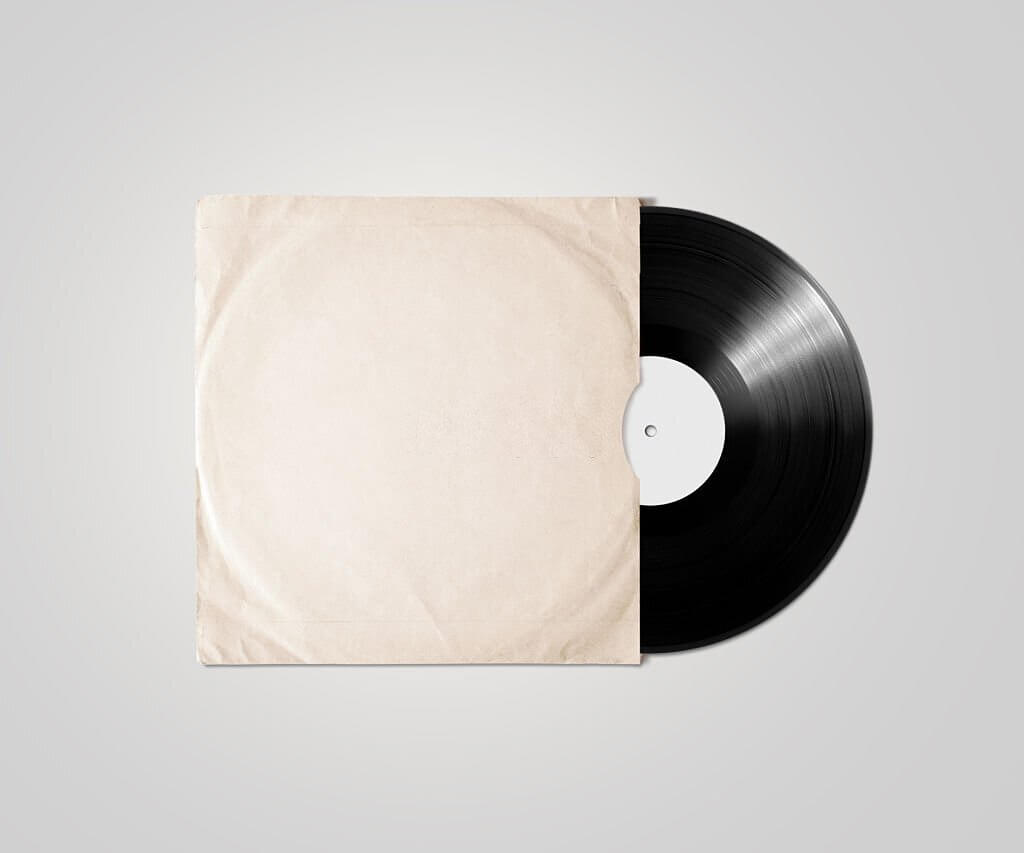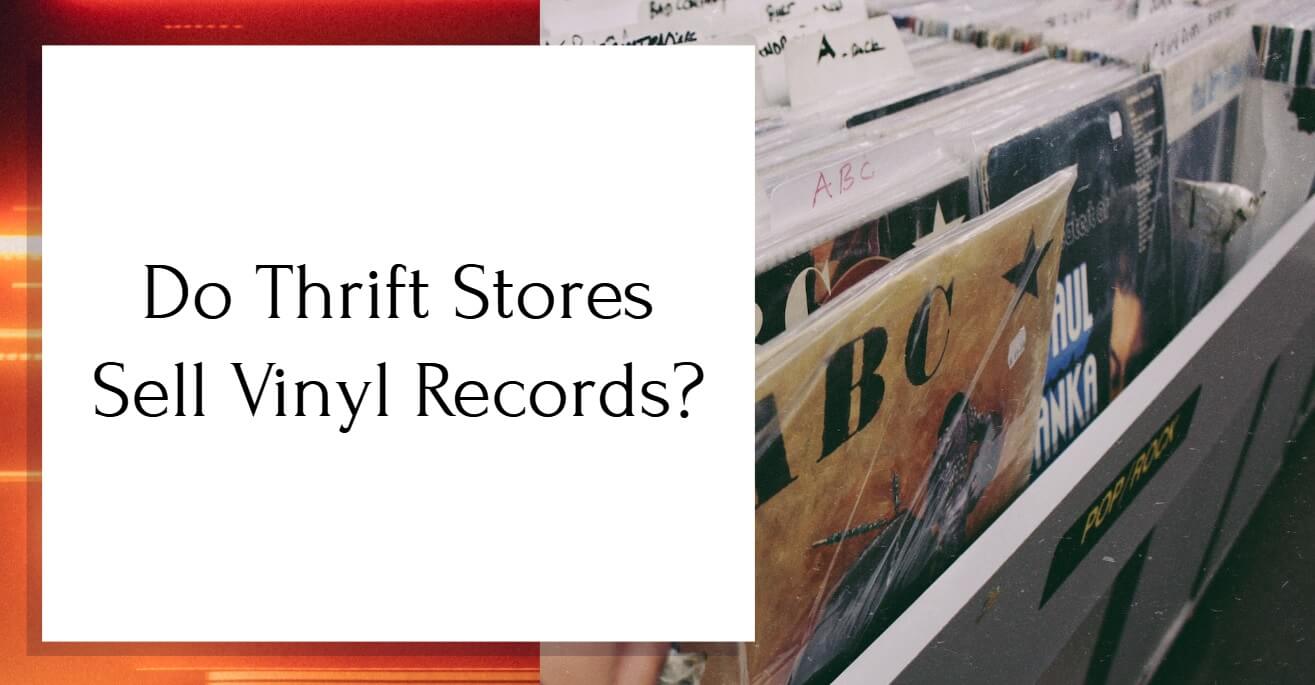Who doesn’t like shuffling through endless racks of different clothes in thrift stores? I know I do. Every thrift store visit ends up with a huge sense of accomplishment getting great deals on various stuff.
If you think thrift stores only sell clothing, you might be surprised. It’s true that some thrift stores sell clothing exclusively, but other thrift stores have tons of different merchandise.
Going into a thrift store, especially big ones, you would expect to find clothing, furniture, electronics, kitchenware, books, tools, toys, and many more items. So, how about vinyl records? Do thrift stores sell vinyl records? Keep reading to find out.
Do Thrift Stores Sell Vinyl Records?
Yes, among all other different things, thrift stores sell vinyl records. Finding a vinyl record that’s worth buying, however, is like finding a needle in a haystack.
Vinyl enthusiasts usually go thrift shopping for different kinds of records to add to their collection. Not to mention resellers who are always looking for rare records that they can sell online.
Now, with the growing awareness of the original vinyl’s increasing value, it’s become harder to find those gold gems. Still, it’s not impossible to find a classic first-pressing vinyl if you look hard enough.
Are Thrift Store Vinyl Records Worth Buying?
Personally, I think labeling something as worth buying varies from one person to another. In general, Many factors determine the value of a thrift store find.
Some things depend on a person’s taste while others have a more profound sentimental value, like a childhood memory of some sort.
When it comes to resellers, on the other hand, the resale value is the controlling factor. The more that item is in demand the more expensive it sells.
For vinyl records, their price can vary widely. So, if you’re after making a profit from reselling thrift store vinyl records, you should keep your eyes open. With patience and dedication, some people do find vinyl records that are worth buying.
Related: Will vinyl records wear out by time?
Most Common Thrift Store Vinyl Albums
If you’re a vinyl enthusiast and a frequent thrift store visitor, you probably encountered your fair share of records. Among loads of vinyl crates, there are always some common albums that you find in every thrift store. Those albums include:
- All Barbra Streisand albums
- Moody Blues
- The Sound of Music
- Neil Diamond
- Christmas records
- Paul Anka
- Chicago
What To Look Out for When Buying Second-Hand Vinyl?

While you may stumble upon many valuable vinyl records in thrift stores, there’s nothing like finding a classic press still in a good condition. There are things to look out for when you go thrift shopping for vinyl records. Those things are:
The Cover’s Condition
The condition of the sleeve is a big indication of the vinyl record’s status. I don’t mean the little tears or bent corners, those can easily happen.
The best-case scenario is that you’ll find a record still in the original shrinkwrap, and that’s a keeper. However, when the sleeve is a little beaten up, with the inner sleeve missing, the record is most probably no good.
The Sound Quality
It might not always be available, but having a turntable or a record player at the thrift store helps a lot. If you can, you should always play the record before buying it to check for any visually undetectable flaws.
The Warping
Warping can hugely affect the record’s sound quality, as it causes the pitch to shift while playing. Place it on a flat surface, or hold it straight at your eye level to know exactly how bad that warping is.
The Scuffs and Scratches
Make sure you’re standing in a well-lit area and check for any visible scuffs and scratches. Short hairs stuck to the surface of the record probably came from the inner sleeve. They are an indication that the records haven’t been played much.
You can also run your fingers against the record to see if any of those scratches are deeply engraved. The worst kinds of scratches are those perpendicular to the direction of the grooves. They can cause background noises and pops.
Parallel scratches are no better, as they can cause the record to get stuck in a loop.
The Price
You should always have your mobile phone on you while thrift shopping for records. Compare their prices against similar copies with similar conditions for an opportunity to bargain with the shop owner.
Can Thrift Store Damaged Vinyl Records Be Repaired?
Flipping through crates of vinyl records and picking up a vintage piece can be really exciting. Finding out that the disc is damaged, however, is totally disappointing.
This doesn’t always mean that the record is beyond saving. There are a few cases where the damage can be fixed.
Don’t try the DIY fixing methods on rare vinyl records, though, it’s worth the investment to get it professionally restored.
Dust and Debris
It’s really important to clean the record before attempting to fix it. Dust and debris could be one of the reasons the sound quality is low.
The safest way to clean your vinyl is by using a special record cleaning kit. It comes with a cleaning brush, cleaning fluid, stylus brush, and a velvet brush.
If you want a DIY method, try a gentle cleaning solution and water. Carefully, wipe your record in a circular movement with a wet microfiber cloth. Finally, rub the record with a dry microfiber cloth.
Don’t forget to check the needle on your record player and make sure it hasn’t got any leftover debris on it.
Warped Records
Over time, records get warped, which can affect the sound quality. They might even become unplayable.
A simple way to try fixing a warped vinyl record is by placing it between two heavy books and forgetting about it. It might take weeks to notice an improvement.
Another way that involves using heat is laying the record flat between two sheets of glass. Then, putting them inside a preheated oven for no more than 3 minutes. It has to be set to the lowest temperature setting.
Finally, remove the glass and record from the oven, and set them on a flat surface. Place a heavy object over the glass sheet and let them cool down. Repeat the process if needed.
Be careful not to overheat the record as it could melt and get destroyed completely.

